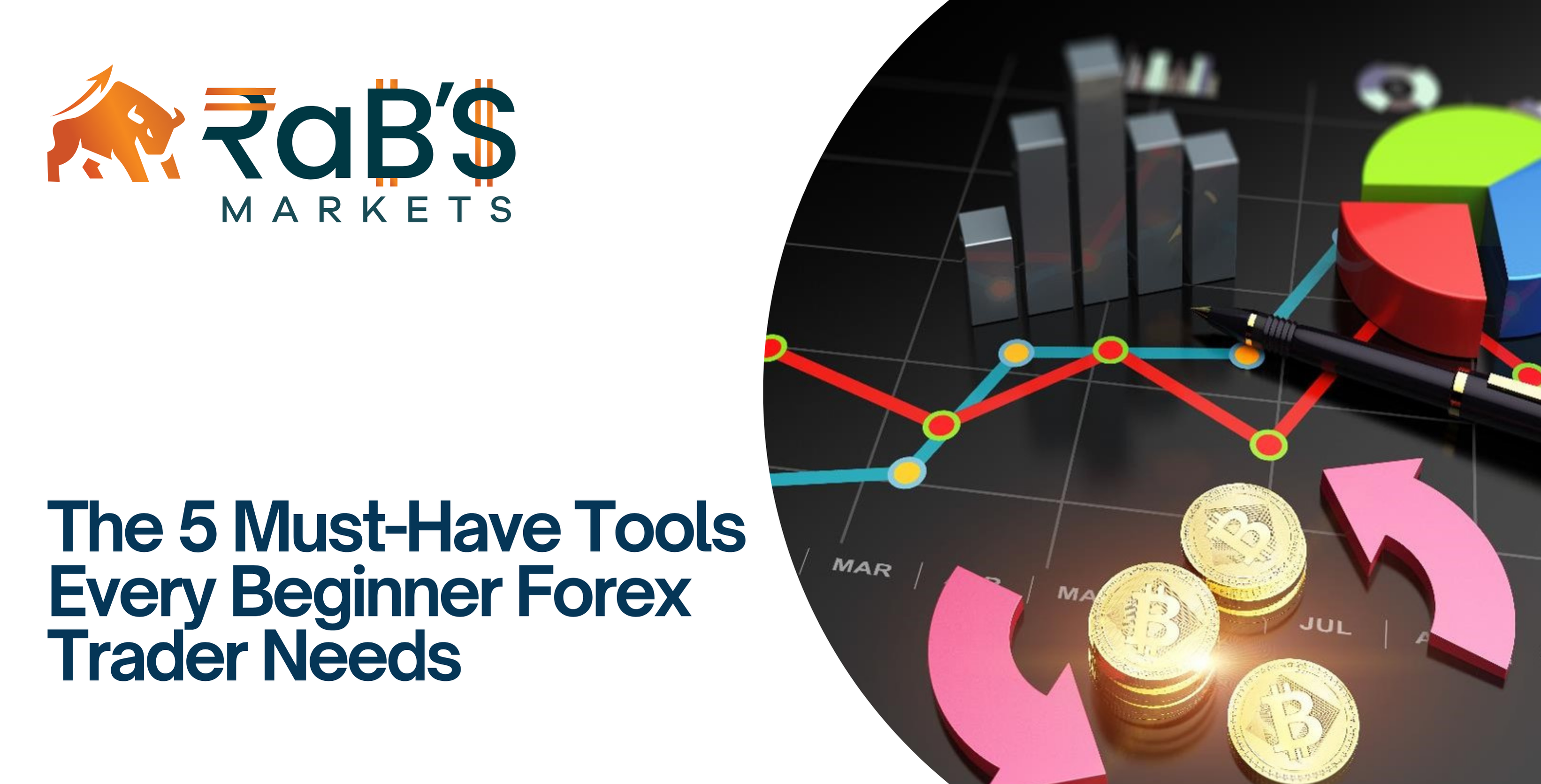Diving into forex trading for the first time? It’s exciting, but let’s be honest—it can feel like stepping into a maze. Charts, data, breaking news, technical jargon… it’s enough to make anyone’s head spin.
The good news? You don’t need to master everything right away. The best traders keep it simple at first, focusing on a few reliable tools that build a solid foundation. Think of these as your starter kit—essentials that keep you informed, help you manage risk, and develop your confidence step by step.
At Rabs Markets Limited, we’re all about keeping forex simple and clear. So here’s a straightforward look at five essential tools that can make your trading journey smoother, safer, and smarter.
🗓️ 1️⃣ Economic Calendar: Don’t Get Caught Off Guard
Markets don’t move randomly—big moves usually happen for a reason. An economic calendar is your roadmap to those reasons.
Central bank decisions, jobs data, GDP releases, inflation reports—these can all trigger sudden shifts in currency prices. A good calendar tells you exactly what’s happening, when, and which currencies might react.
Key features you’ll see:
- Time and date of each release
- The currency pairs likely to be affected
- Expected market impact (low/medium/high)
- Previous results vs. forecasts
Checking this every morning takes just a few minutes but can help you avoid nasty surprises—and even spot big opportunities.
📊 2️⃣ Charting Software: See the Market Clearly
Numbers alone don’t tell the whole story. Charts translate all that data into something you can actually see and understand.
A charting platform shows you real-time price action for any currency pair you’re interested in. With candlesticks, trend lines, and indicators, you can begin spotting trends and patterns—clues that hint at where prices might head next.
Top picks for beginners:
- MetaTrader 4 or 5 (MT4/MT5) – Industry standard, loaded with features
- TradingView – Easy to use, browser-based, and has a great community
Spend time exploring charts, even if you’re just observing. It builds intuition and helps you read the market better over time.
🔢 3️⃣ Risk Calculator: Protect Your Capital
No plan? No trade. That’s a golden rule for smart traders—and a risk calculator makes planning easy.
This tool tells you how much to risk per trade, how big your position should be, and where to place your stop-loss. For example, if you want to risk only 1–2% of your account, the calculator does the math for you.
Trading is about survival first, profit second. Small, consistent wins add up—blowing your account in one trade does not.
📰 4️⃣ Forex News Feed: React Fast, Trade Smart
News drives the forex market. One unexpected statement from a central bank or a sudden political event can move prices in seconds.
A reliable news feed keeps you in the loop. You’ll get updates on global events, market sentiment, data releases, and surprise announcements—so you can adjust your trades or step aside when needed.
You don’t have to read every detail—just keep an eye on headlines so you’re never trading blind.
🧪 5️⃣ Demo Account: Practice Without Risk
Before putting real money on the line, practice with fake money. A demo account lets you trade in live market conditions with zero risk.
It’s the best way to:
- Test strategies and indicators
- Learn how different order types work
- Build your confidence step by step
Most brokers offer free demo accounts—use them! Treat your demo account like the real thing and you’ll build good habits that stick when you go live.
✅ Wrapping Up
No single tool can make you a trading pro overnight. But together, these five give you a solid start:
- 🗓️ Economic Calendar – Be prepared every day
- 📊 Charting Platform – Read what price is telling you
- 🔢 Risk Calculator – Keep your money safe
- 📰 Forex News Feed – Stay ahead of surprises
- 🧪 Demo Account – Practice until you’re ready
At Rabs Markets Limited, we’re here to help you trade smarter from day one. If you enjoyed this guide, check out the rest of our beginner-friendly resources and weekly updates on our blog.
Good luck and happy trading—your journey starts now! 🚀✨



